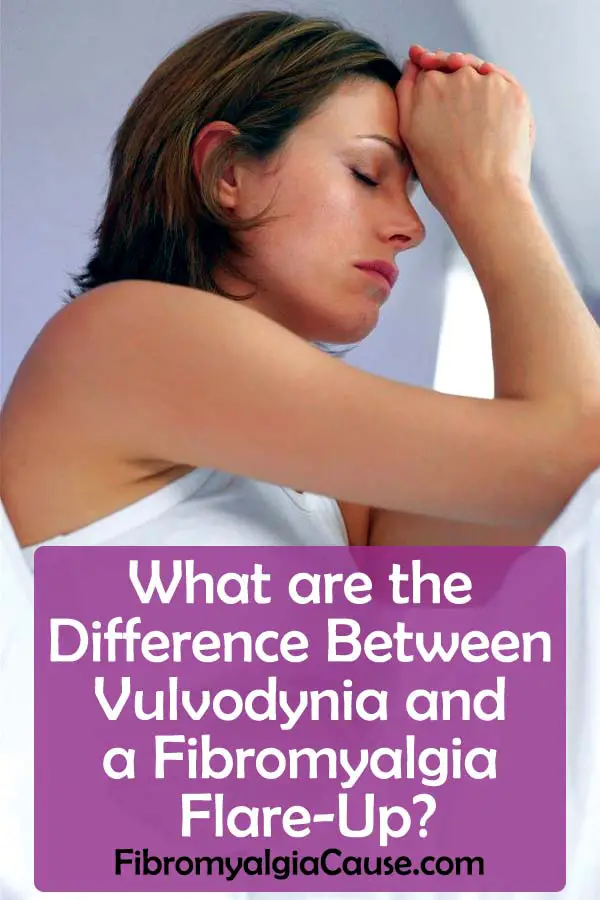There are some things in this world that are really uncomfortable to talk about, and sometimes, we end up having to discuss them with our doctor.
If there is some sort of problem with our reproductive organs, we often have a hard time discussing it.
The issue is, if we don’t talk about it, we can end up having greater problems later on.
In this article, we’re going to take a look at a condition known as vulvodynia and how it could be linked with fibromyalgia.
What is Vulvodynia?
So, if you’re a woman that suffers from fibromyalgia, you likely know about the vaginal pain that you feel from time to time.
But in some cases, there’s an issue that is called vulvodynia, which is chronic pain that only affects the vulva, which is at the front of your vaginal region.
That being said, it can be embarrassing to face and it can be hard to admit, so there aren’t really numbers out there about who has it – even though estimates say that anywhere from 1/6 to 1/3 of women have had it at some point during their lifetime.
There are a ton of symptoms that are related to vulvodynia that makes it incredibly painful. Many times, people with vulvodynia avoid having sex because it just hurts too much for them to do so.
The area around your vulva may feel as if it is swollen. You may notice a lot of itching and burning.
Sometimes, it ends up making your vagina a lot drier, thus making it feel raw and sore. In the worst cases, it may throb and you may end up with sores around the vulva. In general, it hurts a lot.
Why does it happen? There are a few theories. If you’re going through menopause, you seem to be more likely to end up with vulvodynia at some point.
In some cases, you’ll end up with vulvodynia alongside a sexually transmitted disease.
Skin problems, muscle spasms, and a variety of other health issues can be linked to the development of vulvodynia. Some people have it for a short period of time; others end up with a chronic case of it.
How Can You Determine the Difference Between Vulvodynia and a Fibromyalgia Flare-Up?
So, of course, this begs the question – how do you know that you have vulvodynia and it’s not just your body being weird with a fibromyalgia flare up?
The biggest factor that helps you to tell the difference between a flare up and vulvodynia is the amount of time that you have the problem.
If you are feeling pain in your vagina for a couple of days, it may be vulvodynia, but it’s usually just a flare-up.
But, if you’re starting to feel the pain for weeks or even months, that’s a sign that something else is going on.
There are a few other signs that you can look for as well.
Usually, a flare-up will not make your vagina raw or dry – so if you start to notice that, you are likely suffering from vulvodynia or another related disorder.
If you’re a woman with fibromyalgia, the chances are high that you’ll have vulvodynia at some point – some estimates say that up to 2/3’s of all women who have fibromyalgia end up dealing with the disorder, thus making it difficult to really pinpoint where it comes from and why it happens.
How Do You Treat It?
So what can you do if you are trying to fend off your fibromyalgia and a vulvodynia breakout at the same time?
Your doctor will give you some options, and you may have to try a few before you find the relief that you’re looking for.
Here are some of the most common treatments that are prescribed for fibromyalgia sufferers who are coping with the symptoms of vulvodynia as well.
Creams and solutions that are focused on reducing the itching, redness, and burning of the vaginal area.
There are a number of them out there, and many of them are used for yeast infections and other similar problems. You may have to try a few before you find the right one.
Medications that prevent muscle spasms can actually help a lot, since the pain may cause your muscles to spasm, which would make your vulvodynia hurt a lot worse in the long run.
Massage and acupuncture can help to reduce the pressure and the pain in your pelvis and the area around the vagina.
Massage and acupuncture are often recommended for fibromyalgia suffer because it can also help to loosen up your muscles and allow for more flexibility, which also may play a role in reducing the pain from your vulvodynia.
If you’re dealing with it at home, make sure that you are wearing undergarments and pants that are loose around your vagina.
That way, you can have some space and you don’t have to worry about the pressure from your underwear causing you even more pain in this region.
Consider switching to all natural soaps and hygiene products in order to help reduce the number of chemicals and irritants that are in that area, thus making it itch less often and it can also help the swelling to go down as well.
Fibromyalgia has a number of different treatment plans; they are pretty much as varied as the people who have the disorder.
This is mainly because no two people experience the same symptoms and struggle with the same types of pain.
That being said, if you are struggling with fibromyalgia and concurrent disease, like vulvodynia, it’s important that you determine ways for you to live a healthy, normal life.
Talking with your specialist and working with a number of different professionals can help you get a wide range of care that you need in order to thrive.
Don’t just “deal with it;” get help for the pain and figure out a treatment plan that works for you.
Follow Us on Pinterest
Pin it if you find it helpful and to Keep notified with our new articles

References:
http://chronicfatigue.about.com/od/whyfmscfsarelinked/a/Vulvodynia-In-Fibromyalgia-and-Chronic-Fatigue-Syndrome.htm
http://www.fibromyalgia-symptoms.org/vulvodynia.html

3 Comments